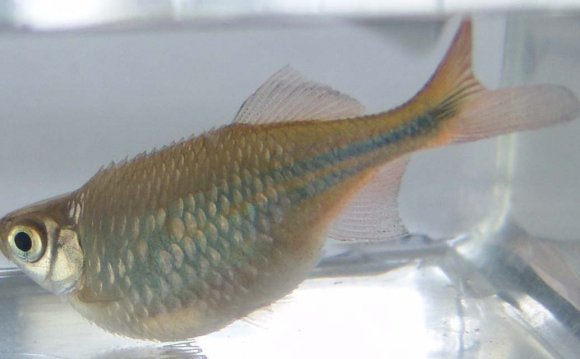
 By Rachel Hunt (Mushi)
By Rachel Hunt (Mushi)
Examples of Dropsy, Image © Danelle
Dropsy, Image © EmmeyJadeDropsy is a serious, usually fatal disease. No one is sure of exactly what causes Dropsy, although there are several theories. One theory is that Dropsy occurs when kidneys fail due to a bacterial infection, causing fluids to build up in the body. Others believe that it is caused by viral, fungal, or parasitic infections, leading to fluid retention that damages internal organs. Seriously ill or weakened bettas are at the highest risk of developing Dropsy. The majority of bettas who show Dropsy symptoms will not recover, although there is a very slight chance that the fish may be cured.
Dropsy Treatment
The chances of survival with Dropsy are very, very low. Usually, by the time symptoms appear, internal organs have been far too damaged to be able to bring the fish back to good health. There have been reports of people curing Dropsy with the use of Tetracycline, Maracyn AND Maracyn 2, Kanacyn, or broad spectrum antibiotic foods.
 Epsom Salts added to the betta's water (at 1/8 teaspoon per 5 gallons of water) may help to alleviate the fluid retention, and make the betta more comfortable, but it will not cure the disease. Be aware the Epsom Salts contain Sulfa, so if you are treating with medications that are not compatable with Sulfa, do not add Epsom Salts to the water.
Epsom Salts added to the betta's water (at 1/8 teaspoon per 5 gallons of water) may help to alleviate the fluid retention, and make the betta more comfortable, but it will not cure the disease. Be aware the Epsom Salts contain Sulfa, so if you are treating with medications that are not compatable with Sulfa, do not add Epsom Salts to the water.
As always, when treating a sick/injured betta, keep them warm.
Dropsy Prevention
Dropsy is an opportunistic disease. The best prevention for it is to keep your bettas as healthy as possible to prevent it from gaining a foothold in the first place. Keeping the bettas in very clean water and keeping them within their optimal temperature range (76-80 degrees Fahrenheit) will help considerably. If your betta starts showing Dropsy-like symptoms, early, aggressive treatment is the best chance you can give them.









